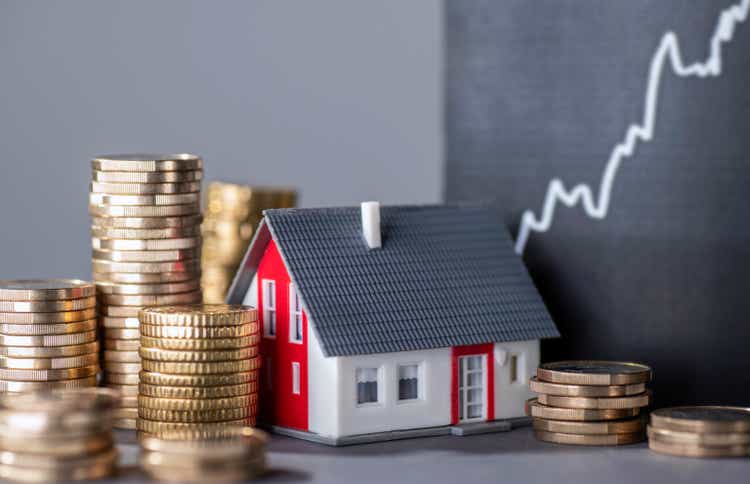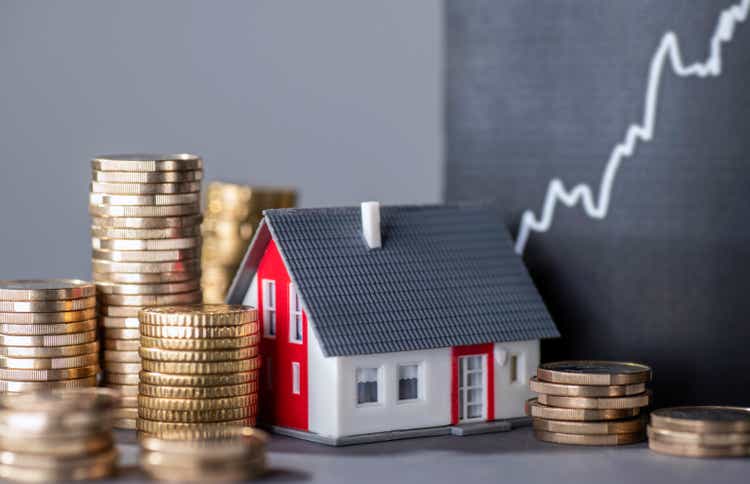
gopixa
The U.S. housing market appears to be undergoing a positive transformation as new listings are on the upswing and home-price growth is returning to the prepandemic norm.
During a volatile three-year span, home prices surged as ultra-low mortgage rates ignited a buying frenzy, only to retreat when borrowing costs spiked due to the Federal Reserve’s mission to contain inflation. Now, although mortgage rates remain elevated, their reduced volatility compared with the peak of the pandemic has played a key role in steadying home-price growth.
In February, home prices advanced 0.6% M/M, in line with the 0.6% average monthly gain in the roughly eight years leading up to the pandemic, online brokerage Redfin (RDFN) said in a recent report. Similarly, on a Y/Y basis, prices climbed 6.7% in February, compared with the 6.9% average gain in the years preceding the pandemic. This is based on the February Redfin Home Price Index, an equal-weight repeat sales gauge, covering the three months ended Feb. 29, 2024.
Elevated mortgage rates, caused by the Fed’s aggressive tightening cycle, has dampened homebuyer demand over the years, but “that’s not translating into lower home prices today because there still aren’t enough homes for sale – even as new listings rebound,” the report noted.
On a seasonally adjusted basis, new listings gained 3.8% M/M in February to the highest level since September 2022, Redfin said in a separate report, a sign that the supply of homes is finally starting to expand from exceptionally tight levels.
That’s “great news for buyers who for months have been competing for a tiny pool of homes for sale,” said Redfin Economics Research Lead Chen Zhao. “Still, many house hunters are hesitant to pull the trigger because mortgage rates and home prices remain elevated.”
The current housing shortage, stemming from post-pandemic increases in material costs, interest rates and inflation, effectively puts the so-called lock-in effect under the spotlight, whereby homeowners are unwilling to list their homes as they don’t want to give up the low mortgage rates they locked in before the Fed starting jacking up rates.
Zillow’s (ZG) (Z) latest monthly report also showed new listings of existing homes on its platform jumped 20% in February vs. January and 21% Y/Y. And, at just above 900K, there were more homes for sales in February than in any other February since 2020, the company added.
“We’re finally beginning to see owners who have been putting off moves return to the market,” said Skylar Olsen, chief economist at Zillow. “For many households with record-high equity, waiting out potentially lower rates later in the year may not be worth it.”
A frame of reference
When the Fed started its rate-hiking campaign in March 2022, the average 30-year fixed mortgage rate stood at roughly 4%. The average 30-year fixed mortgage rate was in the 2%-3% range in 2020, when the pandemic shut down the economy and the Federal Open Market Committee cut rates to near zero to spur spending. Before long, pandemic-induced inflation pressures prompted the Fed in March 2022 to start what became its most aggressive rate-hiking campaign in decades, with mortgage rates zooming past 4% at the time. Ratcheting up its benchmark lending rate to 5.25-5.50% from near zero, mortgage rates in late 2023 topped out at 7.79% – the highest level seen in over 20 years – before ebbing to 6.87% as of March 21, according to Freddie Mac data on the St. Louis Fed’s FRED database.
So far in 2024, the year in which the Fed expects to start easing monetary policy, mortgage rates have stayed in a relatively narrow range of ~6.60%-6.95%. Mortgage-rate volatility may be easing, but housing affordability is still at depressed levels, hence the lingering standoff between buyers and sellers.


